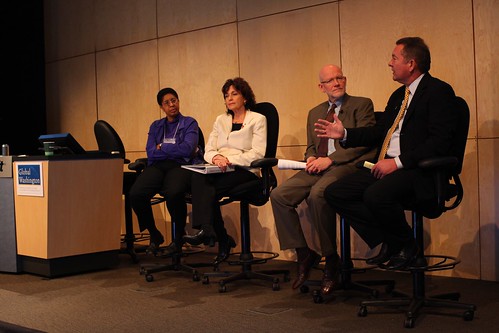Submitted by Nina Carduner
Karen D. Turner, director at the Office of Development Partners for USAID, discussed how USAID pioneered the concept of public private partnerships in 2001. Yet, moving to partner with businesses has presented a challenge for USAID because often, the drivers for development are very different for private entities and there are many stakeholders to engage from social enterprises and diasporas to local and regional firms. USAID is here to facilitate partnerships. According to Turner, USAID has been successful in building public/private partnerships through internal education about how to meet the needs of the private sector and communicating with private sector about the internal workings of USAID. Both public and private enterprises need to understand the complexity of these partnerships and share with one another the best practices for making them transformational.
Rosemary Barker Aragon of Rotary International underscored the importance of understanding each partner’s area of expertise. For example, Rotary International is organized like a pyramid with the money at the top and many individuals on the ground at the local level in 200 countries. When entities approach Rotarians for partnership, they know they will excel at navigating effectiveness on the local level.
Christopher Elias of PATH discussed the ways in which PATH has successfully partnered with pharmaceutical companies around a common purpose. Uniting around a common purpose can add complexity to a partnership when the purpose relates to the core of a business’ product or service, yet this complexity also raises the level of engagement, which creates more leverage in the shared mission. Elias also credited “the rising awareness of global markets and systems for sustainable solutions” for the increasing the success rate of public/private partnerships. When public entities can recognize market changes, they can innovate and reinvent solutions that have prior success but are tailored to the differences between countries and regions.
NetHope’s Frank Schott gave praise to the expertise that private partnerships have have helped the non-profit achieve its mission to help facilitate the appropriate use of information and communication technologies in remote areas and during relief efforts. NetHope grew out of the resource pooling of seven non-profits. Pooling their resources enabled NetHope to attract private partnerships. He explained that, “while we use and appreciate [Microsoft and Cisco] products, the biggest contribution from them has been their expertise. Our supporters aren’t just donors, they are providing us with the technology, but more importantly, the expertise we need to leverage our programs and drive our mission.”
